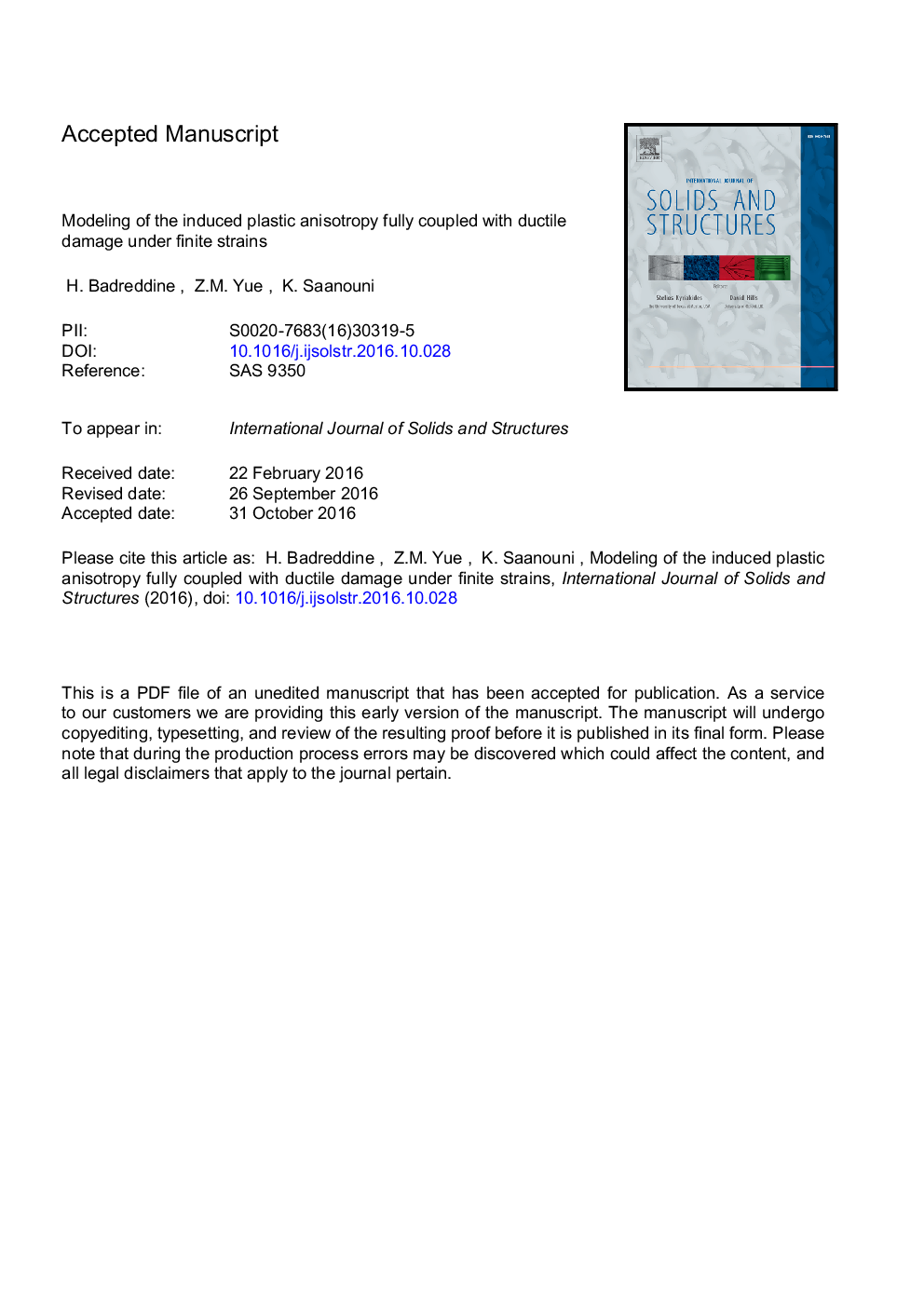| Article ID | Journal | Published Year | Pages | File Type |
|---|---|---|---|---|
| 4922696 | International Journal of Solids and Structures | 2017 | 34 Pages |
Abstract
The introduction of the kinematic hardening induced distortion of the yield surface is expected to enhance the capability of the model in simulating the material behavior under complex loading paths occurring during sheet metal forming processes.In this work non-associative elastoplastic anisotropic constitutive equations accounting for mixed nonlinear hardening and fully coupled with isotropic ductile damage, is improved by considering the distortion of the yield subsequent surfaces. A convenient “distortion” deviatoric stress tensor S̲d is used in both yield criterion and plastic potential instead of the usual classical deviatoric stress tensor S̲. Accordingly, the yield surface distortion is controlled by three adequate material parameters named Xl1c, Xl1p and Xl2c. A parametric study is conducted under simple loading paths (tension and torsion) in order to explore the capabilities of the model in describing the yield surface distorsion. Comparisons with experimental results on aluminum alloy, taken from the literature, are also given. Moreover, the influence of the subsequent yield surfaces distortion under complex non-proportional loading paths on the evolution of the plastic flow with hardening and the ductile damage are also discussed and highlighted.
Keywords
Related Topics
Physical Sciences and Engineering
Engineering
Civil and Structural Engineering
Authors
H. Badreddine, Z.M. Yue, K. Saanouni,
